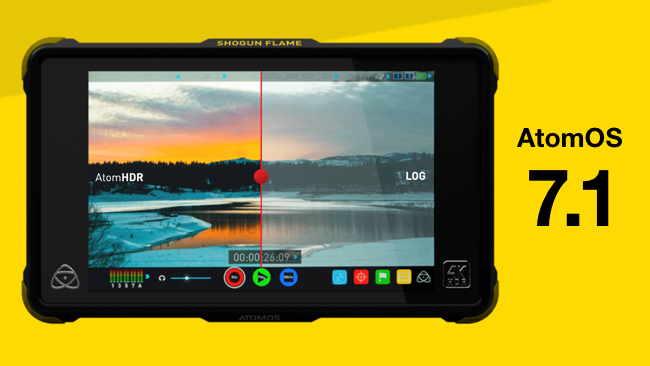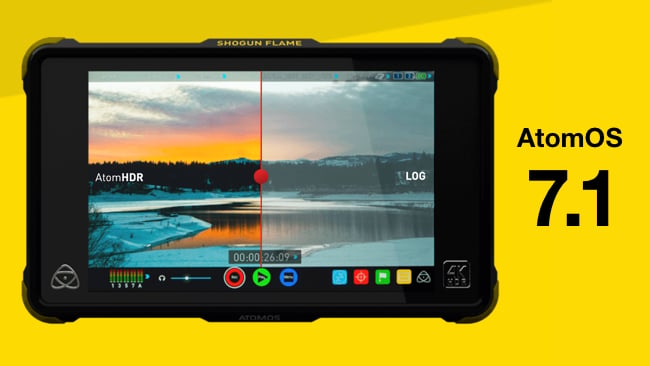
 7v7.1 adds some powerful new HDR tools
7v7.1 adds some powerful new HDR tools
Atomos has just released an important upgrade for its Flame series of HDR monitors and recorders.
AtomOS 7.1 is a big upgrade for Flame series users. Perhaps the most eye-catching improvement is a simple to use HDR slider control that adds and subtracts stops of dynamic range to the displayed picture.
In HDR, it's essential that the dynamic range of the material to be monitored matches the display capabilities of the monitor itself. If there's a mismatch, then the picture will not be seen in its true dynamic range. Flame series monitor/recorders have a very high dynamic range because of their extremely bright backlights and good, solid blacks. The HDR slider allows you to match your recordings and incoming video to the capabilities of the screen, making sure that you see the maximum amount of detail in the light and dark areas of your images.
The built-in waveform display tracks the position of the HDR slider so that you can easily see the peak luminance level, squeezing every ounce of dynamic range from your material.
The new software also allows input and output of PQ ((Dolby) Perceptual Quantizer). This is a "transfer function" to allow HDR to be viewed in a consistent way. Essentially, it means that Flame devices can "see" and display incoming PQ HDR material, and can play it out to compatible HDR monitors too. This will be important as HDR standards vie with each other.
There's no getting away from the fact that all this HDR stuff is very technical. But from what we can see of the new AtomOS 7.1 software, it's going to get easier as the tools mature and develop, and the new release is the best example we've seen of this so far.
Here's Atomos' video showing the highlights of the new software.
Tags: Production



Comments